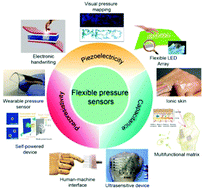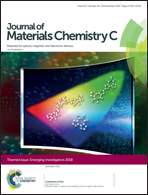Recent progress in flexible pressure sensor arrays: from design to applications
Abstract
Flexible pressure sensors that can maintain their pressure sensing ability with arbitrary deformation are of important significance in the fields of electronic skin, human–machine interfaces and medical diagnosis and treatment. To date, flexible pressure sensors have been studied extensively, and diverse transduction principles as well as different structural designs can be introduced to produce flexible pressure sensors that are capable of conformably covering an arbitrary surface. Moreover, high-performance flexible pressure sensors have been designed for different application needs. For example, high-resolution flexible pressure sensor arrays have been achieved based on piezoelectric nanowires (NWs); meanwhile crack-based pressure sensors with an extraordinarily simple structure have high sensitivity to tiny pressure, such as sound and physiological signals. For broader applications, endowing flexible pressure sensors with the sensing abilities of temperature, humidity and other stimuli are being developed to mimic the somatosensory system of human skin. In recent years, the development of novel flexible pressure sensors has been burgeoning with new sensors developed with self-powered, self-healing and biodegradable abilities. Here, we present comprehensive descriptions of the recent flexible pressure sensors, and then propose the potential prospects of flexible pressure sensors integrated with high sensitivity, high resolution, fast response, good stretchability and a wide detection range together, further enriching the multifunctions of flexible pressure sensors.

- This article is part of the themed collections: Recent Review Articles and Journal of Materials Chemistry C Emerging Investigators


 Please wait while we load your content...
Please wait while we load your content...